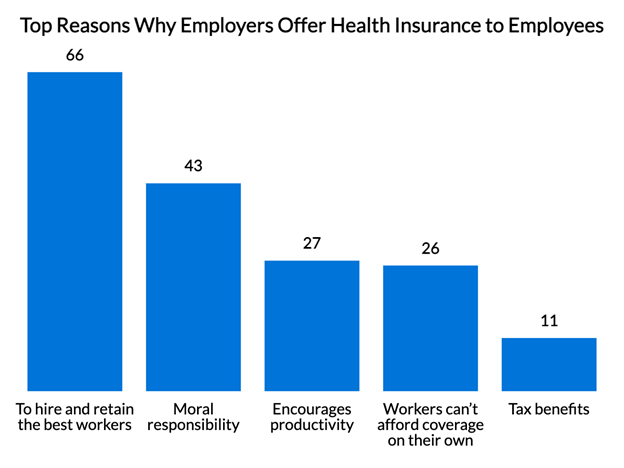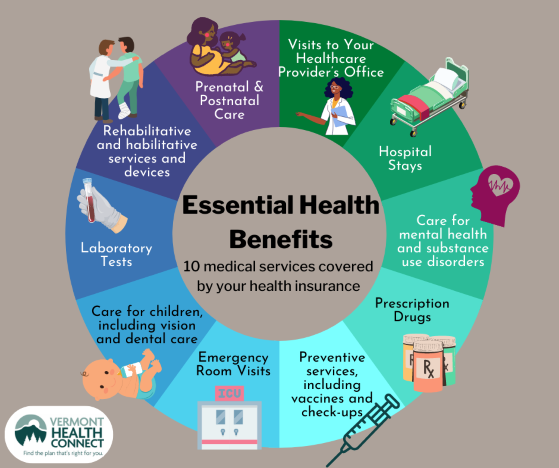Indicators on Medicare Advantage Agent You Should Know
Indicators on Medicare Advantage Agent You Should Know
Blog Article
The Of Medicare Advantage Agent
Table of ContentsMedicare Advantage Agent Can Be Fun For EveryoneThe Only Guide for Medicare Advantage AgentThe 3-Minute Rule for Medicare Advantage Agent

complies with from confusing the reasonably young age account of the uninsured with the better wellness, on average, of more youthful individuals. This obscures the link between wellness condition and health and wellness insurance. For those without accessibility to work environment wellness insurance coverage, poor wellness is a possible barrier to purchasing nongroup insurance coverage because such insurance coverage may be very valued, omit pre-existing conditions, or be just unavailable. The variety of without insurance Americans is not particularly huge and has actually not changed in the last few years. Seven out of 10 participants in a nationally depictive survey assumed that less Americans lacked wellness insurance than in fact do(Fronstin, 1998). About half(47 percent )thought that the number of individuals without health insurance policy decreased or stayed consistent over the latter half of the last years(Blendon et al., 1999). This decline of almost 2 million in the number of people 'without insurance policy (a decrease
of around 4 percent)is certainly a positive modification. With a softer economic climate in 2000 the most recent reported gains in insurance coverage may not continue(Fronstin, 2001 ). The decline in the variety of without insurance will not continue if the economic climate continues to be slow-moving and health care costs remain to exceed rising cost of living. This is due to the fact that the information were collected for a period of strong financial efficiency. Of the approximated 42 million individuals who were without insurance, almost regarding 420,000(concerning 1 percent)were under 65 years of age, the age at which most Americans become eligible for Medicare; 32 million were adults between ages 18 and 65, around 19 percent of all adults in this age; and 10 million were kids under 18 years of age, about 13.9 percent of all youngsters (Mills, 2000). These price quotes of the variety of individuals uninsured are generated from the annual March Supplement to the Present Populace Study (CPS), carried out by the Demographics Bureau. Unless otherwise noted, national quotes of individuals without medical insurance and percentages of the populace with different type of protection are based on the CPS, the most extensively used source of price quotes of insurance protection and uninsurance rates. These studies and the quotes they generate are described briefly in Table B. 1 in Appendix B - Medicare Advantage Agent. These studies vary in dimension and sampling approaches, the inquiries that are asked concerning insurance policy
The Greatest Guide To Medicare Advantage Agent
insurance coverage, and the moment period over which insurance policy protection or uninsurance is determined(Lewis et al., 1998, Fronstin, 2000a ). Still, the CPS is especially beneficial because it generates yearly estimates fairly rapidly, reporting the previous year's insurance policy coverage estimates each September, and due to the fact that it is the basis for a consistent collection of estimates for more than 20 years, enabling evaluation of fads in insurance coverage in time.

The Only Guide for Medicare Advantage Agent
Over a three-year period starting early in 1993, 72 million individuals, 29 percent of the united state populace, lacked protection for at the very least one month. Within a single year(1994), 53 million individuals experienced a minimum of a month without coverage(Bennefield, 1998a). 6 out of every 10 uninsured grownups are themselves utilized. Functioning does boost the probability that one and one's family members will certainly have insurance coverage, it is not a guarantee. Also participants of households with 2 full time wage income earners have practically a one-in-ten opportunity of being uninsured (9.1 percent uninsured price)(Hoffman and Pohl, 2000 ). The connection between health and wellness insurance and accessibility to care is well developed, as documented later in this phase. Although the connection in between medical insurance and health and wellness results is neither direct nor simple, a comprehensive clinical and health and wellness solutions study literary works links medical insurance protection
to improved access to care, much better high quality, and boosted personal and population health and wellness status. The 2nd report, on personal wellness end results for without insurance adults, is stood for by the inner circle of the figure, while the third report, on family well-being, incorporates the topics of the second record yet highlights a various device of analysis, namely, the family. The sixth report in the series will certainly provide info concerning approaches and efforts taken on in your area, statewide, or country wide to deal with the absence of insurance coverage and its unfavorable impacts. Levels of analysis for analyzing the effects of uninsurance. This conversation of medical insurance coverage focuses mainly on the U.S. populace under age 65 because essentially all Americans 65 and older have Medicare or other public insurance coverage.
It focuses particularly on those without any kind of health and wellness insurance policy for any kind of length of time. The problems faced by the underinsured are in some aspects similar to those faced by the uninsured, although they are normally less serious. Uninsurance and underinsurance, nevertheless, include clearly various plan concerns, and the approaches for resolving them may vary. Throughout this research study and the five reports to follow, the main focus gets on persons without wellness insurance policy and therefore no aid in spending for health and wellness treatment past what is offered through charity and safeguard organizations. Health and Full Report wellness insurance coverage is an effective variable impacting receipt of care because both individuals and doctors reply to the out-of-pocket price of services. Medical insurance, nonetheless, is neither required neither enough to access to medical services. Nonetheless, the independent and straight impact of health
insurance protection on accessibility to health solutions is well developed. Others will acquire the healthcare they require even without wellness insurance policy, by spending for it out of wikipedia reference pocket or seeking it from providers that use care complimentary or at highly subsidized prices. For still others, medical insurance alone does not make sure invoice of treatment as a result of various other nonfinancial obstacles, such as a lack of wellness care carriers in their neighborhood, limited access to transport, illiteracy, or etymological and social distinctions. Formal research study about without insurance populations in the United States dates to the late 1920s and early 1930s when the Board on the Cost of Treatment produced a collection of reports regarding funding doctor workplace sees and hospital stays. This problem came to be significant as the numbers of clinically indigent climbed during the Great Anxiety. Empirical researches constantly sustain the web link in between access to care and boosted wellness outcomes(Bindman et al., 1995; Starfield, 1995 ). Having a routine resource of treatment can be considered a predictor of accessibility, rather than a direct procedure of it, when health results are themselves made use of as accessibility signs. This expansion of the concept of accessibility dimension was made by the IOM Board on Keeping Track Of Access to Personal Health And Wellness Treatment Solutions(Millman, 1993, p. Whether moms and dads are insured shows up to influence whether their kids receive care as well as just how much careeven if the kids themselves have protection(Hanson, 1998). The health of parents can impact their capability to take care of their children and the level of family tension. Worrying about their kids's access to care is itself a source of stress and anxiety for moms and dads. 3 chapters follow in this record. Phase 2 supplies a summary of how employment-based wellness insurance policy, public programs and private insurance coverage run and connect to supply extensive however incomplete coverage of the united state populace. This consists of an evaluation of historical patterns and public laws affecting both public and exclusive insurance coverage, a conversation of the interactions amongst the different sorts of insurance policy, and an examination of why individuals relocate from one program to one more or end up

Report this page